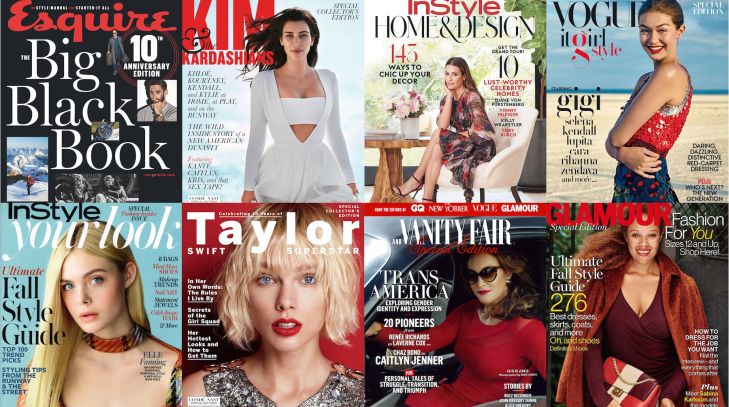 Mass market magazine publishers, an in effort to bolster ad revenues and offset sluggish monthly sales at the newsstand, are increasingly turning to special interest publications, with good success.
Mass market magazine publishers, an in effort to bolster ad revenues and offset sluggish monthly sales at the newsstand, are increasingly turning to special interest publications, with good success.
As Chantal Fernandez explains in The Business of Fashion, “publishers are getting more creative with high-margin print products that feel like premium magazines, mining their archives for photographs and articles that may have already been published in a monthly edition to create fresh, collectible issues devised with consumers — and brand advertisers — in mind.”
“It’s content that the magazines have already produced, so they’ve paid for it once and they’re making money off of it twice. And they are making a lot of money off of it,” says Aileen Gallagher, associate professor of magazine journalism at Syracuse University’s Newhouse School, to Fernandez.
The idea has always had its skeptics, and our friend Samir “Mr. Magazine” Husni worries that publishers might be cannibalizing their monthly sales with this “sword with two edges.”
Not to worry, according to the publishers interviewed for the article.
“I think it’s a different audience, and again I go back to the single topic,” said Raúl Martinez, creative director of Condé Nast. “It really is so specific and it speaks to a cultural moment. That also is the reason why [readers will] pay a little more for it.”
That “little more” is often quite hefty, with Husni noting the average price of an SIP has doubled in the past five years, up to as much as $15.99 each. “The key to these non-subscription issues is topical specificity, as well as quality elements that encourage collectability,” Fernandez says.
“The steep cover price, combined with low editorial cost, makes for an easier profit. (While securing rights to republish some content can pose a challenge, everything has already been photographed, fact-checked, etcetera),” Fernandez continues.
In fact, the profit margin is wide enough, Husni notes, that one publisher told him that “even if they sell only two copies out of every ten [produced], they make money.”
One important reason for their success is their focus on airport terminals and bookstores, places where people who might not normally subscribe to magazines, or purchase them in a typical newsstand, find themselves browsing and buying to read on a flight or other leisure time.
“Indeed, readers will find no subscription blow-in cards popping out of special-edition spines,” Fernandez notes. “Publishers are hoping to tap into a group of readers who might not even care about magazine brands at all.”
As to the viability of magazine brands in general, Hearst’s David Carey is clear on one thing: “As long as we have airport terminals, we are going to have print magazines.”

December 10, 2016, 2:54 pm